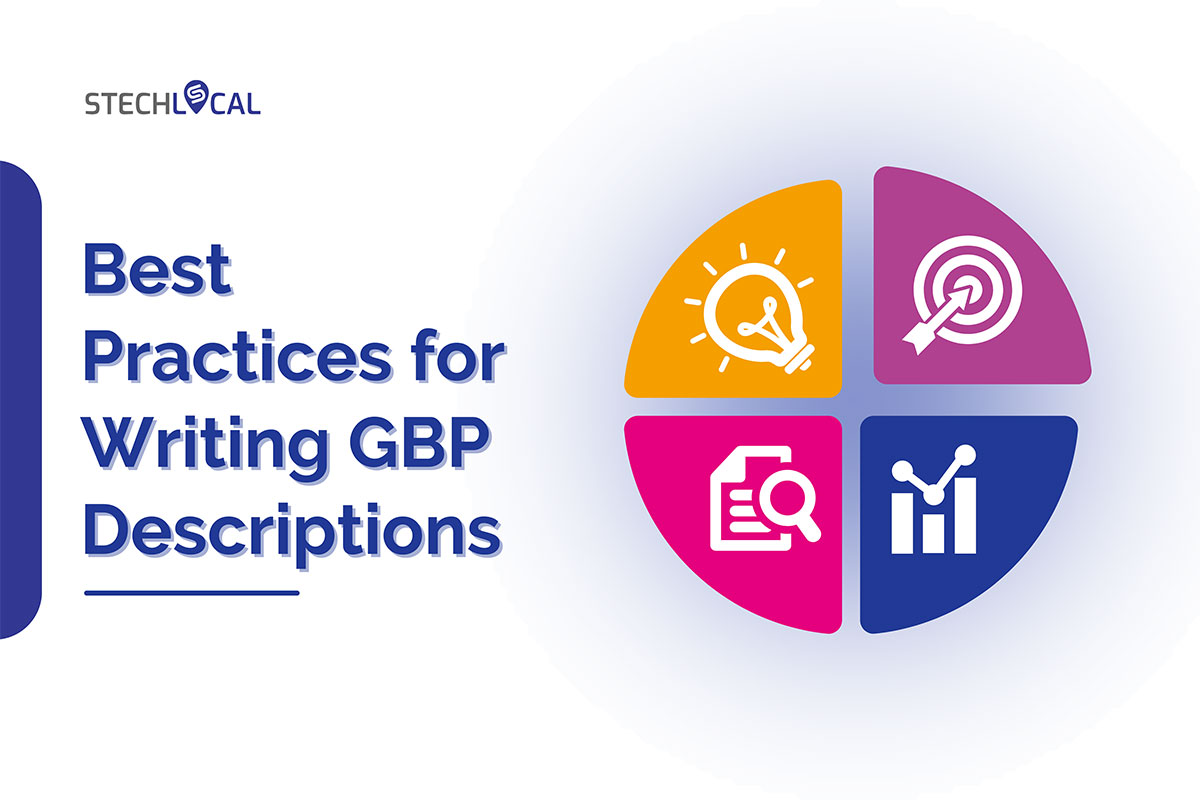How To Optimize Google Business Profile

Despite its potential, the Google Business Profile (GBP) remains one of the most underutilized tools in digital marketing. With just a few strategic optimizations, local businesses can achieve faster, more measurable results than many traditional SEO tactics.
So, in the mobile-driven digital world, your GBP is no longer optional—it’s the front door to your business online. Whether you run a small business, a clinic, or a retail store in a metro city, optimizing your GBP is critical for dominating local search results.
Let’s dive into the ins and outs of Google Business Profile to outrank your competitors.
What Is Google Business Profile?
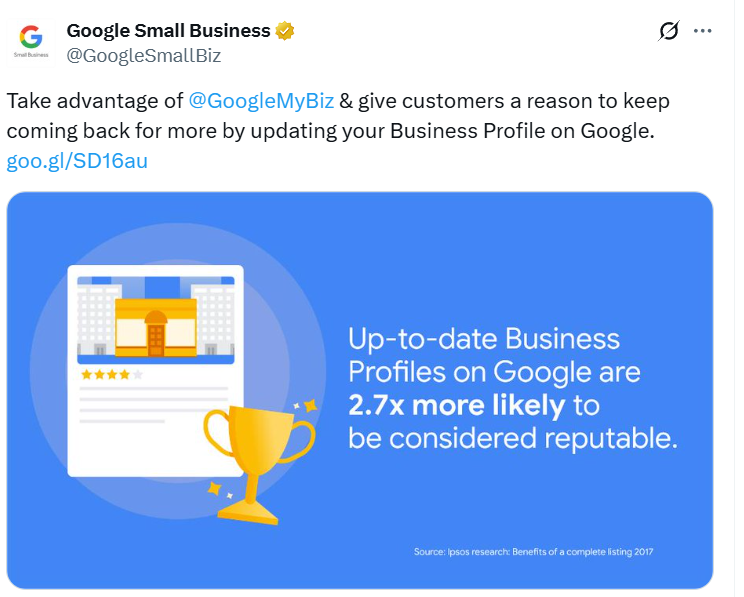
Google Business Profile (GBP), formerly known as Google My Business, is a free, dynamic listing tool from Google. It enables businesses to showcase essential information directly on Google Search and Google Maps.
“It’s much easier to double your business by doubling your conversion rate than by doubling your traffic.” — Jeff Eisenberg, Author of “Call to Action”
So, it acts as a centralized platform where you can present the most accurate and appealing version of your business to potential customers, right when they’re searching with intent.
With GBP, you can display key details such as:
- Business name and description
- Phone number and website URL
- Working hours and holiday updates
- Service or delivery areas
- Booking, reservation, or appointment links
- Direct call and direction buttons
- Photos and videos (interior, exterior, team, services)
- Attributes like wheelchair accessibility, women-led or veteran-owned
You can also upload a cover photo, and add Google Street View and interior images, helping users visually explore your location before they even visit. These rich media elements build trust and improve conversion rates.
However, it’s important to note that users can suggest edits to your GBP listing. This means details on your profile—such as your business category, phone number, or hours—can be modified by others. To maintain accuracy and control, it’s critical to regularly log in and review your profile for any changes.
Step-by-Step Guide To Optimize Your Google Business Profile
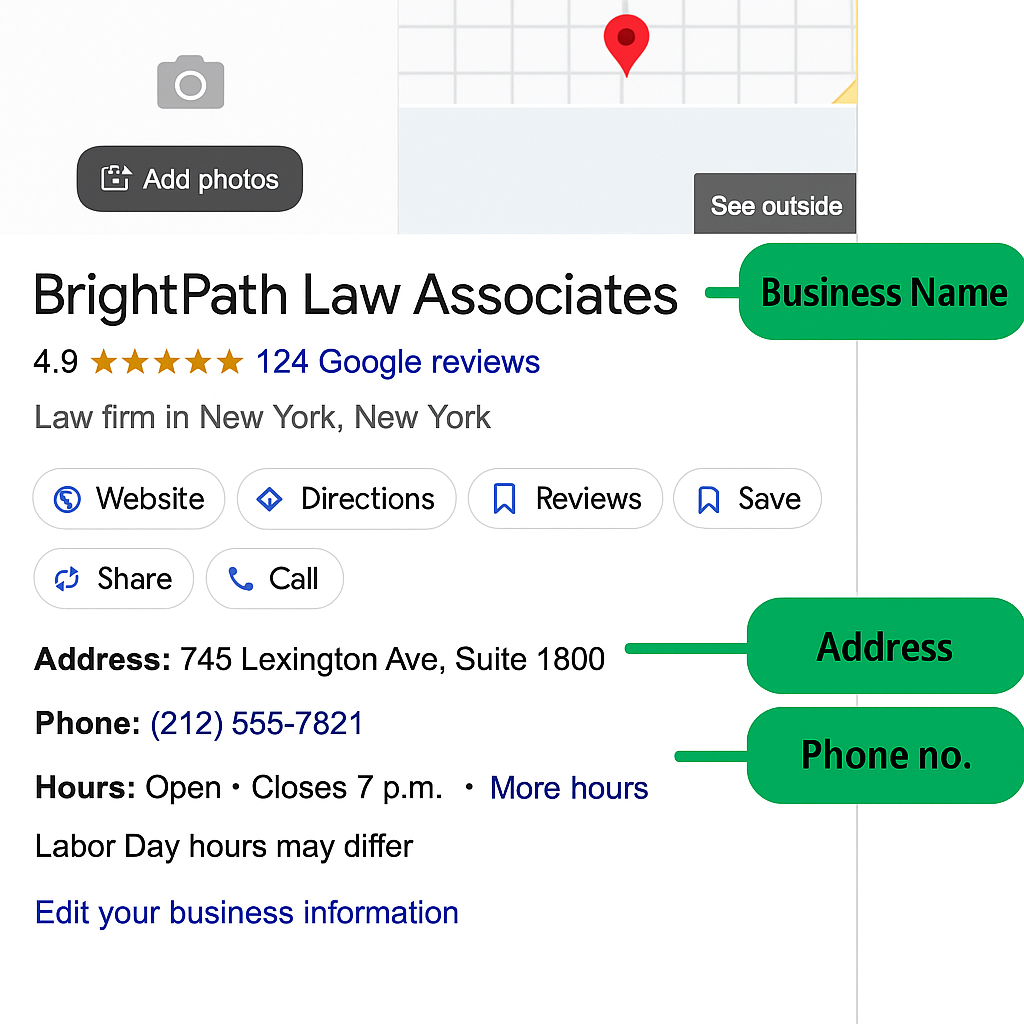
Optimizing your Google Business Profile is not just about filling out your listing — it’s about strategically enhancing every section to increase visibility, engagement, and conversions.
The following is a detailed, step-by-step process to fully optimize your GBP for better outcomes:
Step 1: Fill Out Every Section of Your Google Business Profile
Create your Google Business Account via https://business.google.com/in/business-profile/ and verify your listing.
The first step in optimization is to completely and accurately fill out every section of your Google Business Profile (GBP). Google heavily favours fully completed listings when determining rankings for local search results.
Once verified, your focus should shift to filling every available field, not just basic details like your business name, address, and phone number (NAP). Other important sections — such as business hours, appointment links, photos, attributes, Q&A, products, and services — are an added benefit to enhance your visibility and engagement.
Step 2: Use the Correct Business Name (No Keyword Stuffing)
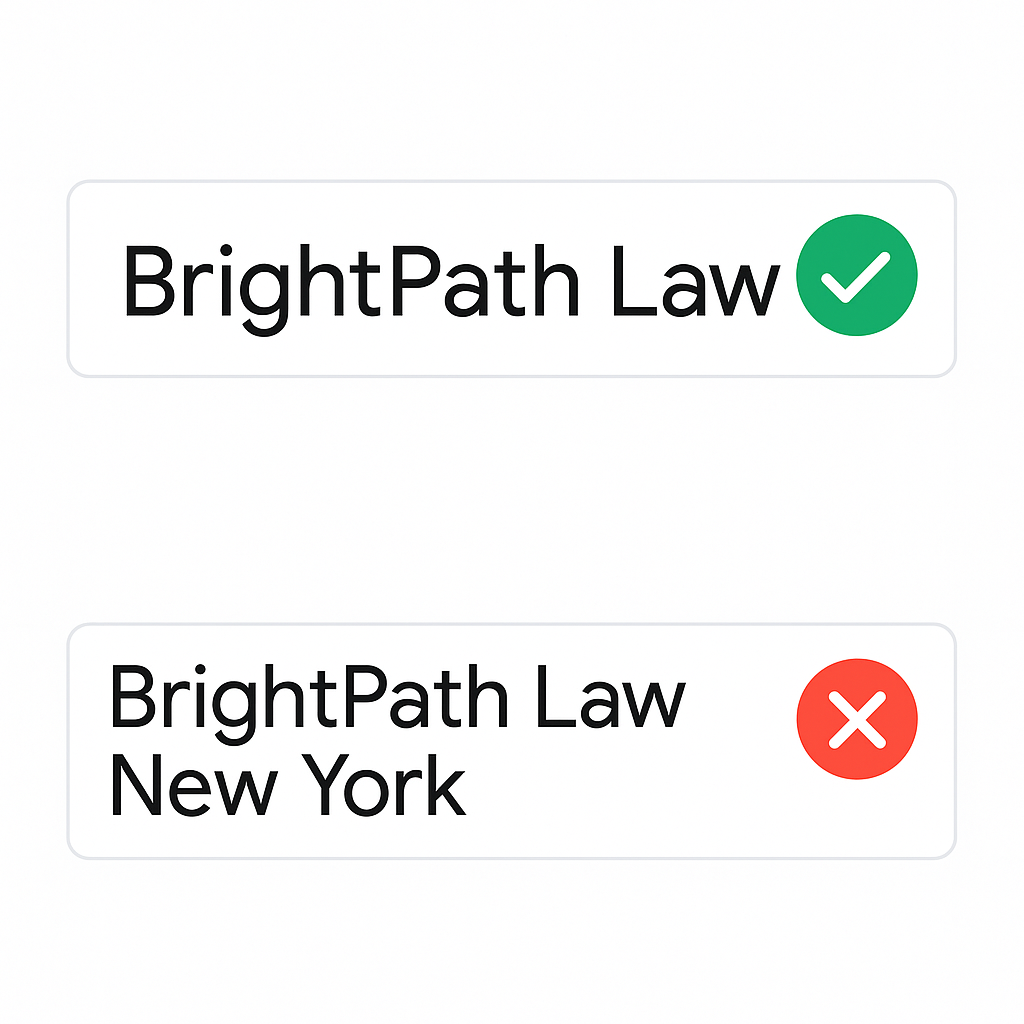
One of the most overlooked yet critical components of Google Business Profile optimization is ensuring your business name is entered exactly as it appears in the real world, without keyword stuffing.
According to Google’s official guidelines, your business name in GBP must reflect your actual business name used in storefront signage, branding materials, legal documents, and online assets. Adding extra keywords like location or services is strictly against Google’s policies and can lead to suspension or removal of your listing.
What Is Keyword Stuffing?
Keyword stuffing refers to the practice of adding unnecessary keywords (location, services, adjectives) to your business name in an attempt to manipulate search rankings.
Step 3: Choose the Most Accurate Primary and Secondary Categories
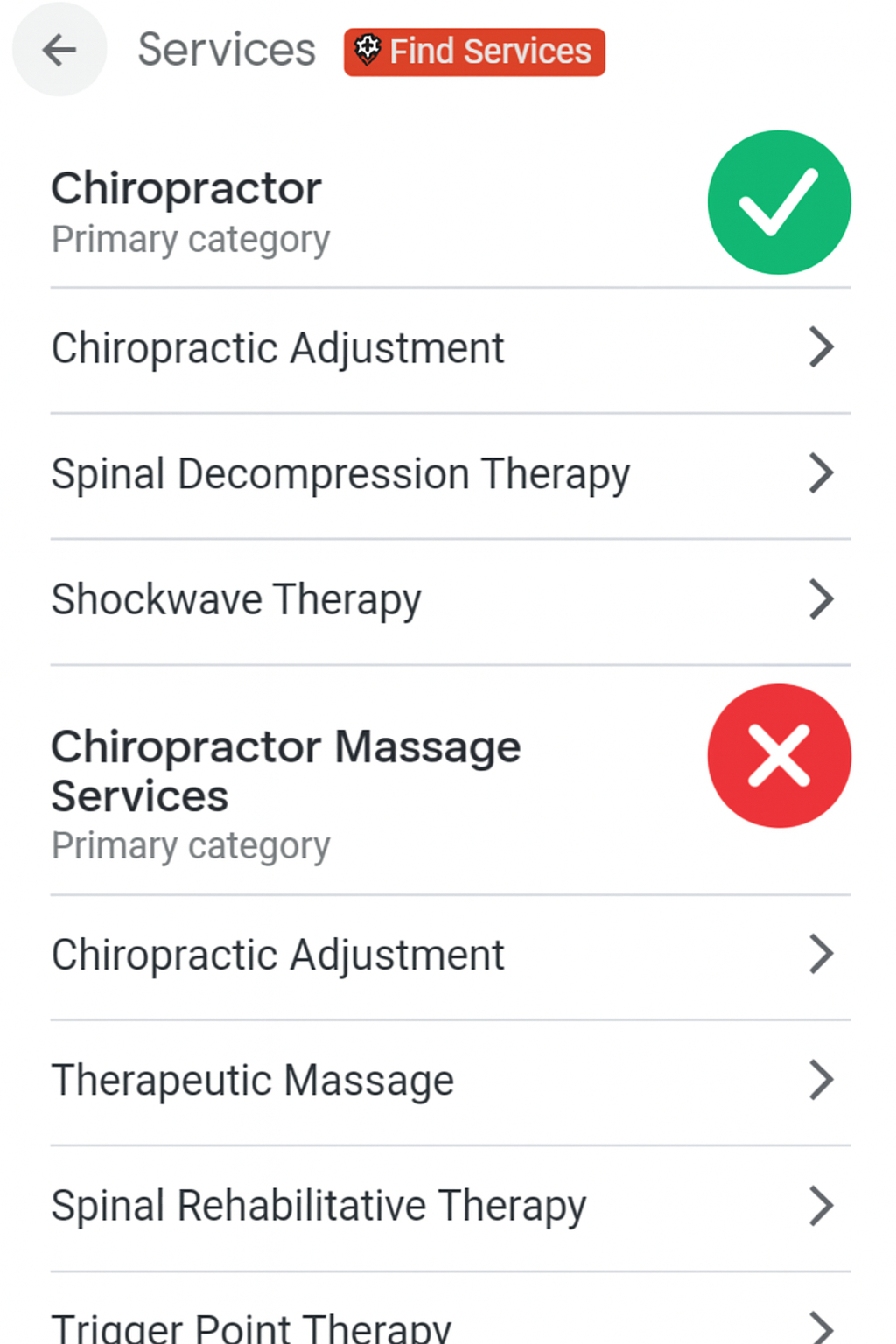
Categories signal to Google what your business is about, which helps determine when your profile is eligible to appear for specific queries.
Always select the most specific categories available to increase your relevance and visibility.
Choosing the right primary and secondary categories is one of the most influential factors in how your business ranks in local search results, including the Google Local Pack, Maps, and voice search.
The following are the best practices for category selection:
- Choose only ONE primary category that most accurately defines your core service
- Add 2–4 relevant secondary categories that reflect your additional offerings. In the secondary category, you can add more than 11 categories
- Review competitors who rank in the Map Pack and emulate their category structure (if accurate).
- Don’t include categories for services you don’t actively offer—even if they’re related
- Reassess your categories every few months, especially if your business expands or changes focus.
How Categories Affect Visibility
- Your primary category carries the most weight—it tells Google your core offering and directly influences keyword relevance and feature eligibility (e.g., appointment links, menus, services)
- Secondary categories provide supporting context, helping your business appear for a wider range of related searches without diluting the main focus.
Note: Never choose irrelevant categories. Google penalises category mismatches, which can reduce your profile’s reach and authority.
Example (for a dental clinic):
- ✅ Primary Category: Dentist
- ✅ Secondary Categories: Cosmetic Dentist, Pediatric Dentist, Dental Implants Provider
Wrong Approach:
- ❌ Primary: Hospital (Too broad or misleading)
Step 4: Write a Keyword-Rich Business Description
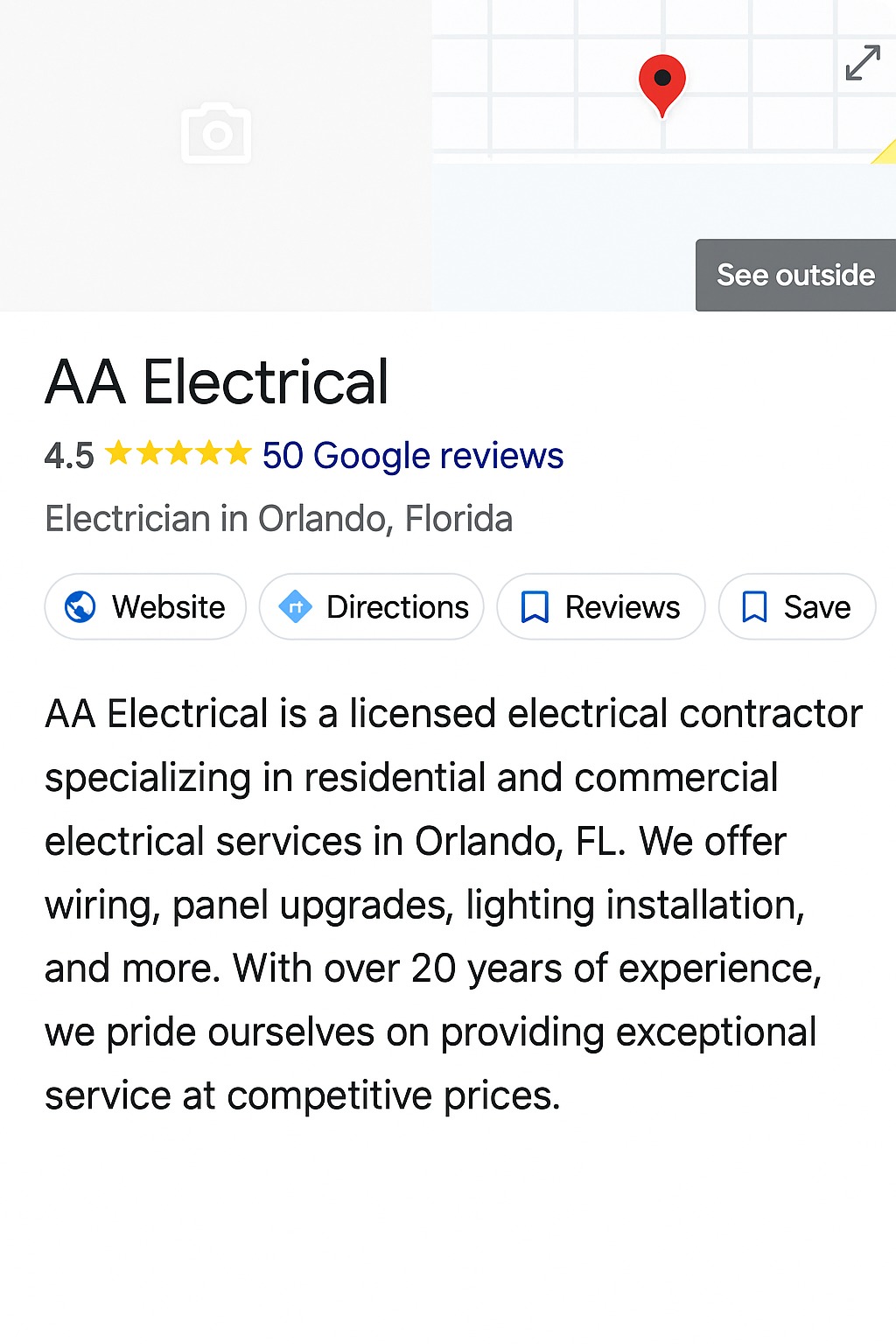
“Content builds relationships. Relationships are built on trust. Trust drives revenue.”
— Andrew Davis, Author of “Brandscaping”
Your Google Business Profile description is a prime opportunity to showcase your business’s services, location, and unique value proposition (USP) while embedding targeted local keywords that improve your visibility in search.
Google allows up to 750 characters, but only about 250 characters are visible in the initial snippet on mobile. So, your most important information—including keywords—should appear at the beginning.
What To Include in a GBP Business Description:
To write an effective and compliant description, focus on:
- Who you are: Your business name and what you specialise in
- What you offer: Core services or solutions you provide
- Where you operate: City, neighborhood, or service areas
- What makes you unique: Years of experience, certifications, pricing, team, or customer service focus
Note: Avoid promotional content, pricing details, emojis, all caps, or keyword stuffing. Google does not allow CTA-like phrases such as “Call now” or “Best in the city.”
Formatting Tips in GBP Description:
- Use full sentences for professionalism and readability
- Avoid all caps and overuse of punctuation
- Keep paragraphs short and mobile-friendly
- Place top keywords (service + location) in the first 2 lines
- Proofread to ensure clarity and flow
Step 5: Add High-Quality Photos and Videos
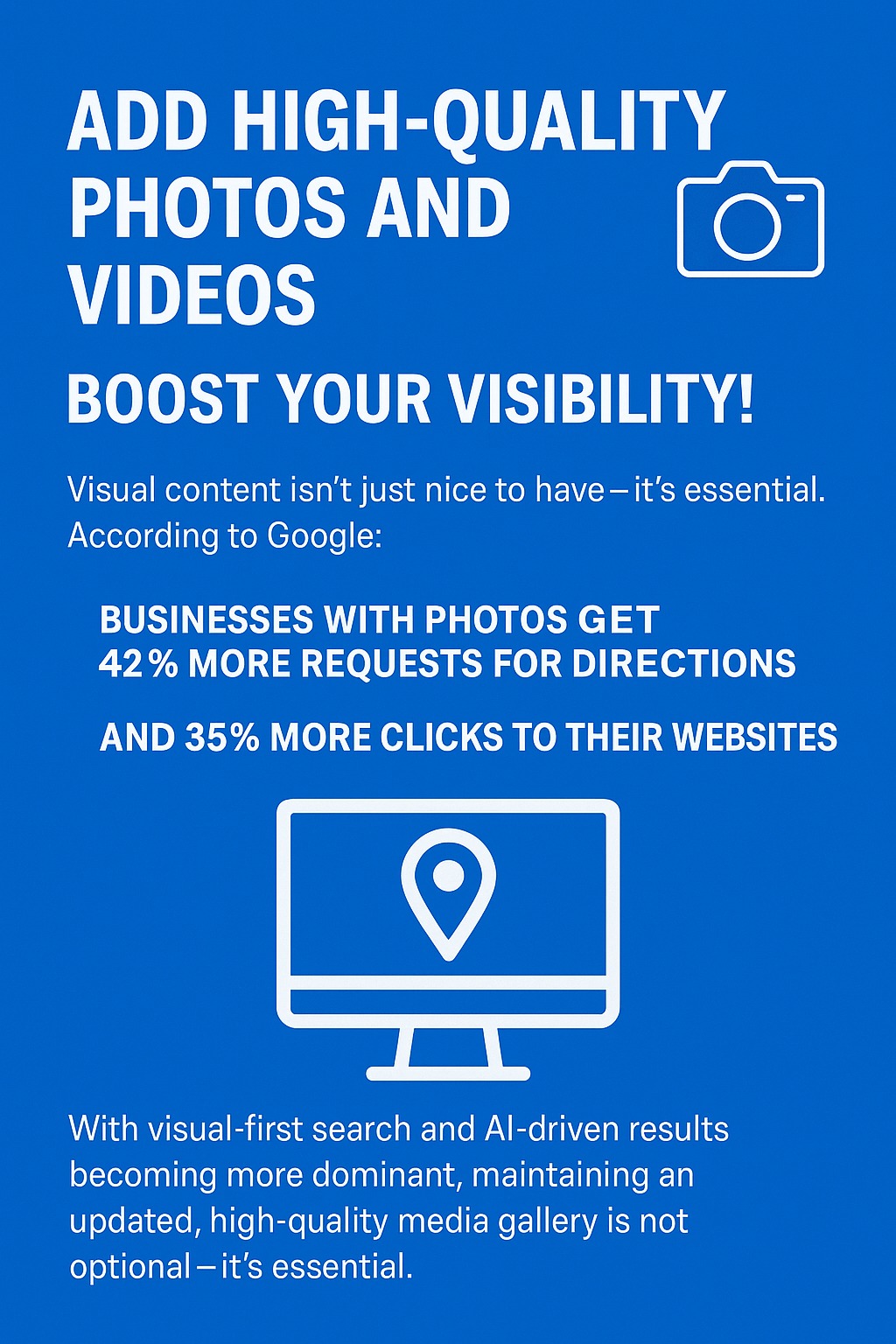
Types of Visual Content to Upload
A well-rounded GBP media strategy includes a variety of image and video types to build trust, showcase professionalism, and increase engagement:
| Photo Type | Purpose |
| Exterior | Helps users recognise your location from the street |
| Interior | Showcases ambiance, cleanliness, and layout |
| Team Photos | Builds trust and human connection |
| Logo | Reinforces brand identity and appears in SERPs |
| Service Photos | Displays your work, products, or customer experience |
| 360° Photos | Offers immersive virtual walkthroughs (optional but powerful) |
Ideal Image Guidelines for GBP
| Format | Recommendation |
| Size | 720px × 720px minimum (Recommended: 1200x900px) |
| File type | JPG or PNG |
| Aspect ratio | 4:3 or square (1:1) |
| File size | Under 5MB per image |
Bonus: Add short-form videos showing services in action, team introductions, or client testimonials—this aligns with 2025’s trend of
engagement-driven local SEO.
SEO Best Practices for Images on GBP
- Geotag images with latitude/longitude using EXIF metadata before uploading (optional but valuable for hyperlocal SEO).
- Rename files descriptively before upload (e.g., family-dentist-Arlington.jpg, not IMG_9375.jpg).
- Keep branding consistent across the cover photo, logo, and team photos
- Upload regularly—fresh content signals activity and improves visibility.
Why Short-Form Video Matters in GBP Ranking
Google increasingly favors engagement-rich content, especially short-form videos that provide clarity, context, and authenticity. Videos help your listing appear in:
- Google Maps previews
- Mobile search panels
- Discovery features like “Places You Might Like
- AI-generated search results (SGE)
Video Ideas:
- Client testimonial clips
- A “Day in the Life” at your business
- Quick walkthroughs of your facility or services
- Behind-the-scenes content (safe and brand-appropriate)
Pro Tip: Upload at least 1–2 new photos/videos per month to stay active and signal relevance to Google’s local algorithm.
Step 6: Add Complete and Consistent Contact Info
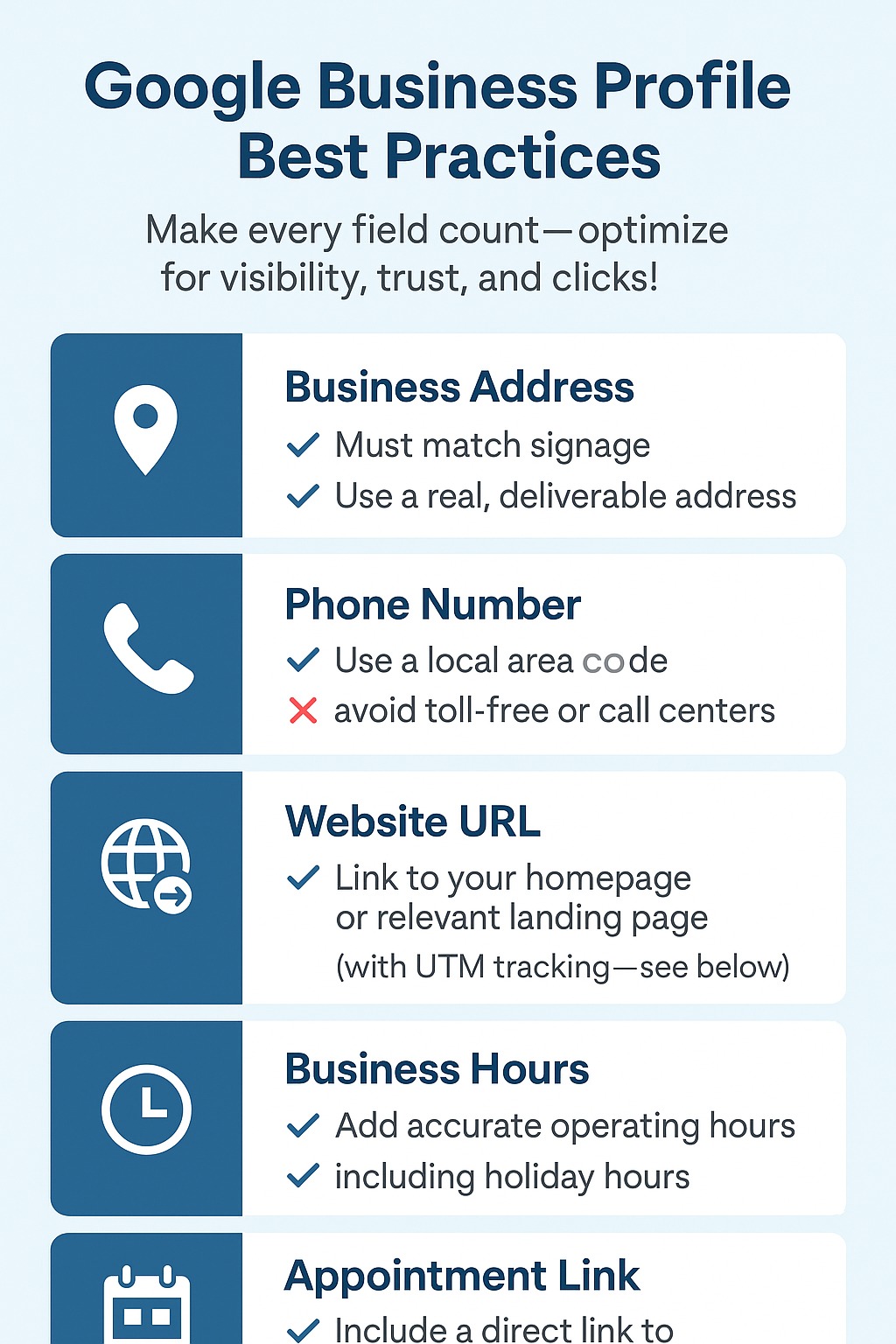
Adding accurate and consistent contact information to your GBP is one of the most fundamental steps in local SEO.
Google uses this information to determine your business’s credibility, legitimacy, and location relevance in search and Maps results. Any inconsistencies across platforms can dilute trust and negatively impact your visibility.
What To Include in Your Contact Information
Ensure every element is complete, correct, and formatted consistently across your website, directory listings, and citations:
Tip: The phone number and website should match exactly with what’s listed on your homepage and across local directories (NAP consistency).
Why It Matters:
- Increases trust and ranking signals through NAP consistency
- Reduces confusion for users and Google’s algorithm
- Enables accurate ROI tracking for local SEO campaigns
- Ensures maximum conversion opportunities with appointment links and active business hours
Pro Tip: Double-check your contact info regularly, especially during rebrands, relocations, or holiday hours. Inaccuracies can lead to profile suspension or loss of visibility.
Your NAP (Name, Address, Phone number) must be consistent across the web—from your website to directories (like Yelp, JustDial, Sulekha), social media profiles, and business citations.
| Consistency = Trust = Better Rankings |
Step 7: Enable and Optimize GBP Attributes
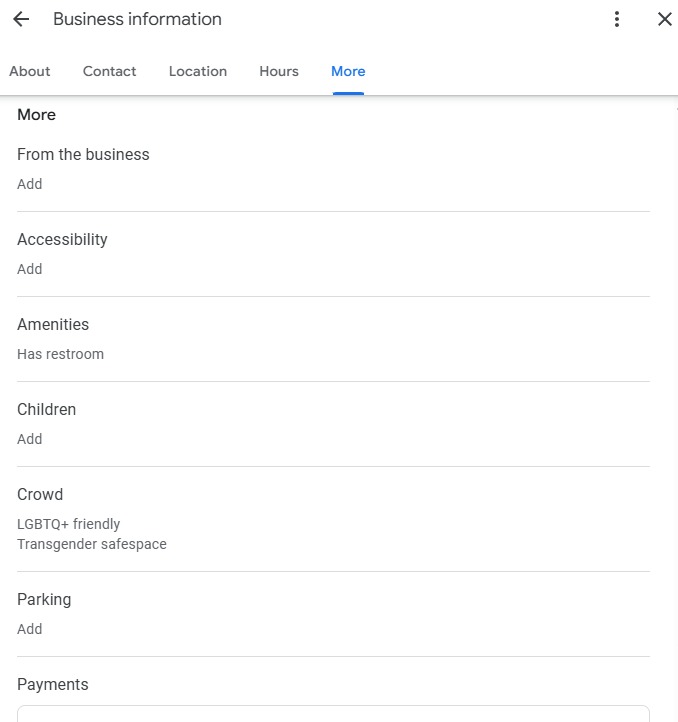
Attributes are predefined tags in your profile that describe operational, service-based, or identity-focused features. They are displayed prominently in search results, Google Maps, and voice search.
Google Business Profile Attributes allow you to highlight specific features, qualities, and facilities of your business—helping users make faster, more informed decisions. These attributes vary based on your business category, and when used strategically, they can directly improve visibility, credibility, and click-through rates.
Common Attribute Types:
| Type | Examples |
| Accessibility | Wheelchair accessible entrance, elevator, parking |
| Highlights | Women-led, Veteran-led, LGBTQ+ friendly |
| Amenities | Free Wi-Fi, Restroom available, Outdoor seating |
| Service Options | Dine-in, Delivery, Takeaway, Online appointments |
| Payments | Accepts credit cards, Mobile payments |
| Health & Safety | Mask required, Staff wear masks, Appointment required |
Pro Tip: The attributes you see and can apply depending on your primary category. For example, “Online care” is available for medical businesses, while “Outdoor seating” appears for restaurants.
Why Attributes Matter for SEO & Conversions
- Improved local rankings for intent-based searches (e.g., “restaurants with outdoor seating”).
- Enhances your listing in voice search results and Google’s AI-generated answers
- Helps potential customers filter and choose based on their preferences
- Builds trust and accessibility appeal with users (especially for women-led or inclusive businesses)
How To Optimize Attributes:
- Go to your Google Business Profile Manager
- Click on your business → Edit Profile → More
- Under Attributes, browse through available options and select those relevant to your business
- Update regularly if your services or policies change
Step 8: Add Services and Products
GBP offers salient features that allow you to showcase your services, products, and promotional offers—directly within your profile. Leveraging these features correctly can significantly improve your local visibility, engagement rate, and conversions, especially in AI and intent-driven search environments.
Add Keyword-Rich Service Descriptions
The “Services” section allows you to list each of your offerings with custom titles and detailed descriptions. This not only informs users but also gives Google structured context about your business offerings—boosting your chances of appearing for long-tail and intent-based queries.
Best Practices:
- Use clear, keyword-rich titles (e.g., “Root Canal Treatment in Indore” instead of just “Dental Service”).
- Write concise, benefit-driven descriptions (300–1,000 characters recommended).
- Include your target city or neighborhood where relevant
- Group services under logical categories(e.g., Cosmetic Dentistry → Teeth Whitening, Veneers)
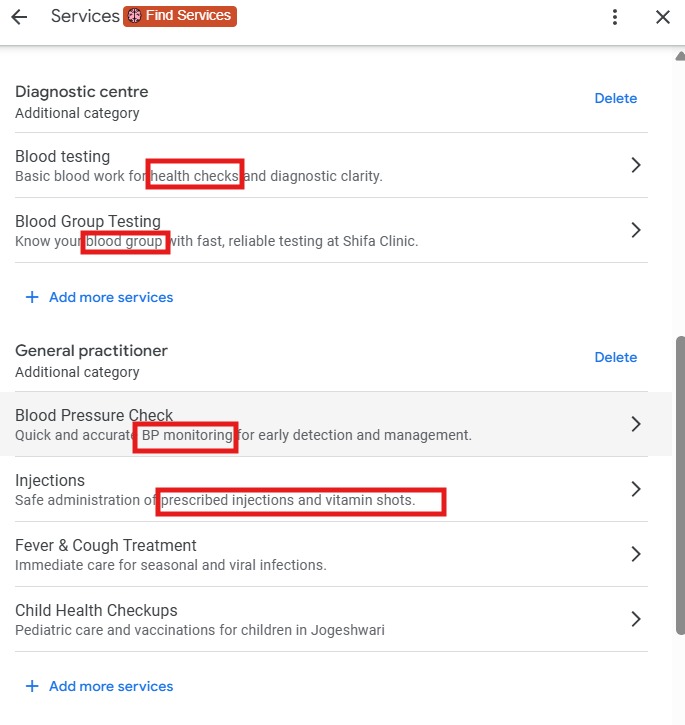
SEO Tip: GBP service descriptions are indexable by Google, making them a great place to add localised keywords naturally.
Add Products — Even If You’re a Service-Based Business
While the “Products” section is intended for retailers, many service-based businesses use this as a visibility hack to showcase their services in a more visually engaging format.
Why It Works:
- Products are displayed more prominently in mobile search and Maps
- You can include images, prices, categories, and CTAs (e.g., “Book Now” or “Learn More”).
- Helps your listing stand out against competitors who ignore this section
Example (for a legal firm):
- Product Title: “Family Law Consultation”
- Image: Branded consultation visual
- CTA: “Schedule Now”
- Description: “Get expert legal advice for divorce, custody, and family disputes in Atlanta.”
Step 9: Post Regular Google Updates (GBP Posts)
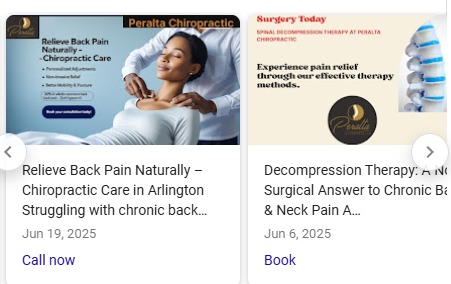
Posting regular updates on your GBP is one of the most effective ways to stay active, relevant, and visible in local searches. Google Posts function similarly to social media updates but appear directly on your Business Profile, often influencing both ranking and user engagement.
Consistent posting tells Google that your business is active and trustworthy while giving potential customers the latest info, offers, and reasons to choose you.
Note: Each post can include an image or video, up to 1,500 characters of text, and a CTA button like “Call now,” “Book,” “Learn more,” or “Order online.”

Use of Keywords & Local Optimization
To maximise the SEO value of your GBP posts:
- Start your post with location + keyword (e.g., “Looking for reliable car repair in Coimbatore?”)
- Include primary services or product keywords naturally in the body
- Avoid keyword stuffing or using promotional language that violates Google’s terms
- Always include a clear CTA (call to action) that drives user engagement
Ideal Posting Frequency
To maintain relevance and stay visible:
- Post at least once every 7 days to keep your profile active
- Use “Offer” posts during special campaigns (sales, festivals, holidays)
- Schedule recurring “What’s New” posts to highlight core services or updates
- Monitor expiration dates (standard posts expire after 7 days, Offers expire based on set dates)
Benefits of Posting Regularly on GBP
- Increases engagement and dwell time on your GBP
- Improves ranking signals and freshness in Google’s algorithm
- Enhances visibility in mobile and branded search results
- Encourages user actions like calls, bookings, and website visits
- Provides a direct channel to promote services without relying solely on social media
Quick Tips for Better Posts on GBP
- Use 1200×900 px images or short videos
- Include a strong, action-oriented CTA
- Make the first 100 characters impactful—only this shows in preview
- Reuse high-performing content from your blog or social media
- Track post performance using UTM tags on buttons to measure click-throughs in Google Analytics
Step 10: Collect and Respond to Google Reviews
“Google only loves you when everyone else loves you first.” — Wendy Piersall
Google reviews are a critical component of your Google Business Profile (GBP) and significantly influence your local SEO rankings, conversion rates, and consumer trust.
In fact, reviews contribute directly to Google’s “prominence” ranking factor—which determines whether your business appears in the Local Pack and Maps.
Collecting more high-quality, keyword-rich reviews and responding to them strategically gives your business a reputation edge and sends positive ranking signals to Google.
Ask for Reviews Using a Direct Google Review Link
Make it easy for customers to leave reviews by providing a short, direct link to your GBP review form.
How to Create Your Review Link:
- Go to your Google Business Profile Manager
- Select your business > Click “Ask for reviews”
- Copy the unique URL provided and share it with customers via
- Email follow-ups
- SMS
- Website thank-you pages
- Printed receipts or QR codes at your location
Pro Tip: Add a short call-to-action like “We’d love your feedback—share your experience here” along with your review link.
Read Also: Best Tools for Review Management
Step 11: Turn on Google Messaging
Google Business Profile Messaging allows potential customers to message you directly from your profile—making it one of the most immediate and conversion-friendly features available on mobile.
When mobile-first and conversational search dominates local intent, enabling and optimizing this feature gives your business a competitive edge.
Why Enable Messaging?
- Offers a real-time communication channel between you and customers
- Reduces friction in the customer journey (“Ask before booking” behavior).
- Increases conversions by making your business more accessible
- Boosts engagement signals and improves profile trust metrics
How To Turn on Google Messaging
- Open your Google Maps or Google Search app(signed in with your GBP email)
- Search for your business name
- Tap “Customers” → “Messages” → “Turn On”
- Activate auto-replies to greet users when they message
Note: Google Messaging is currently available on mobile only, and conversations are visible only to profile managers/admins.
Set Up Auto-Replies
Setting an automatic greeting helps users feel heard instantly—even if you’re not available right away.
Example Auto-Reply:
“Hi there! Thanks for contacting [Business Name]. We typically respond within 30 minutes. How can we help you today?”
Best Practices for Messaging Success
- Respond within 1 hour during business hours
- Use short, friendly, and helpful replies
- Avoid auto-generated, robotic language
- Route complex queries to phone or appointment links
- Assign staff to handle messaging if needed
Why Messaging Helps Your Local SEO:
- Increases engagement metrics on your profile (which Google tracks)
- Encourages more direct interactions and qualified leads
- Enhances the customer experience—especially for high-intent mobile users
- Boosts your GBP visibility in “chat-enabled businesses” filters
Step 12: Optimize the Q&A Section on Your Google Business Profile

The Questions & Answers (Q&A) section on your Google Business Profile is often overlooked—but it plays a critical role in shaping a customer’s decision. It allows users to ask questions directly on your GBP, and your responses appear publicly—often before a user visits your website or calls.
What many businesses don’t realise is that you can (and should) seed your own Q&A with commonly asked questions to improve visibility and trust.
Why the Q&A Section in GBP Matters
- Appears prominently in both desktop and mobile GBP listings
- Helps answer pre-sale questions and reduce barriers to conversion
- Improves your business’s relevance and authority in Google’s local ranking algorithm
- Can include keywords and service-specific language for added SEO value
Best Practices for Managing GBP Q&A
1. Seed FAQs Yourself
You can ask and answer the most common questions your customers usually ask—such as:
- “Do you offer same-day appointments?”
- “Is parking available?”
- “What are your consultation charges?”
- “Do you provide home delivery in[location]?”
Tip: Use localised keywords naturally in your answers (e.g., “Yes, we provide chiropractic care in DeSoto, TX with same-day availability.”)
2. Respond Quickly to Customer Questions
When real users ask questions:
- Reply within 24 hours
- Keep responses professional, helpful, and accurate
- Use short paragraphs for mobile readability
- Include calls-to-action when appropriate (e.g., “Feel free to call us at [number]”)
3. Monitor for Inaccurate Answers
Anyone can answer a question—even random users or competitors. Regularly review your Q&A to:
- Flag incorrect or misleading answers
- Upvote your own official responses so they stay on top
- Edit or update your answers as services or hours change
Why You Need To Optimize Your Google Business Profile
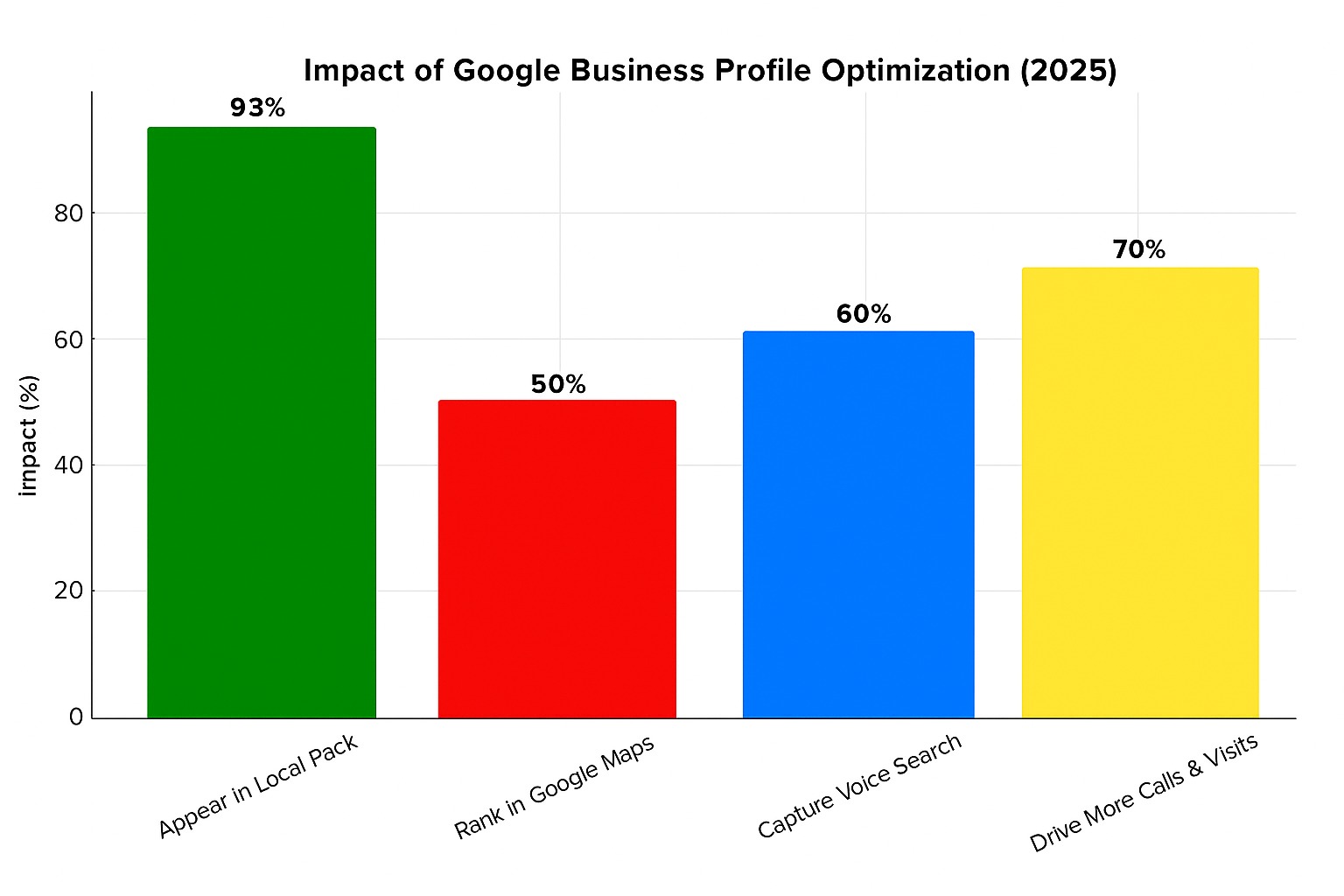
“Local search is the new storefront.”— David Mihm, Local SEO Expert
In the evolving landscape of local SEO, your Google Business Profile (GBP) is no longer optional — it’s foundational.
According to industry data, GBP optimization accounts for up to 25% of local pack ranking factors, making it one of the most impactful and cost-effective actions you can take to dominate local search results.
1. Dominating the Google Local Pack (3-Pack)
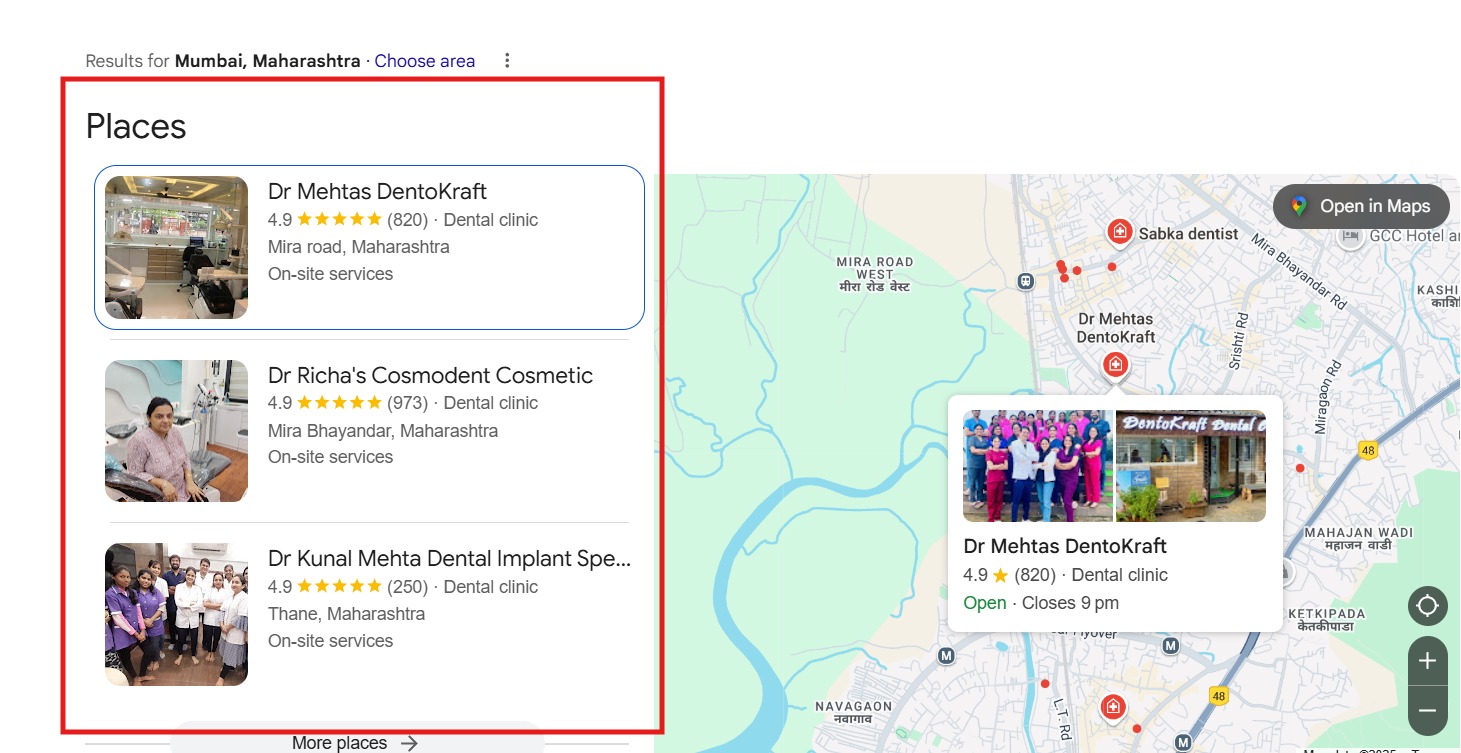
The Local Pack — those top 3 business listings shown beneath the map on local search queries are prime digital real estate. Appearing here means higher visibility, increased credibility, and significantly more traffic.
Studies show that Local Pack appears in 93% of local intent searches (e.g., “best dentist near me”).
Optimized profiles:
- Show up more frequently in the Local Pack
- Include eye-catching elements like star ratings, photos, booking buttons, and review counts
- Outperform unoptimized competitors, even those with better domain authority
2. Increased Visibility in Google Maps Search
Google Maps is no longer just for directions — it’s a local discovery engine. More than 1 billion people use Google Maps monthly, and over 50% of Maps users contact a business within 24 hours.
Optimizing your GBP ensures:
- You appear in Maps when users search for services in your area
- Your profile is complete, attractive, and rich with useful info (e.g., service categories, attributes, photos)
- You rank higher within the Maps interface through accurate business signals
3. Winning at Mobile and Voice Search
With over 60% of local searches coming from mobile devices, and voice assistants like Google Assistant, Siri, and Alexa on the rise, GBP plays a central role in voice-driven and “near me” search queries.
Examples:
- “Coffee shop open now near me
- “Doctor in New York with good reviews”
4. Influencing Key Local SEO Ranking Factors
Google uses a combination of data signals to decide which businesses appear in local search results. GBP influences all three core ranking pillars:
Relevance
How well your profile matches the user’s search query
- Optimized services, business description, categories, and Q&A improve relevance
- Including high-intent keywords like “auto injury doctor,” “family lawyer in Atlanta,” or “pet grooming Miami” signals exact service matching
Distance
How geographically close your business is to the searcher
- GBP allows you to define your service areas (for SABs) and list your business address (for physical locations)
- Accurate NAP (Name, Address, Phone) info ensures Google maps your business correctly
Prominence
How authoritative and well-regarded your business is
- Google considers review count and quality, photo uploads, Google Post activity, and even citation consistency
- The more active, engaging, and complete your profile, the higher your perceived prominence

5. Converting Local Searchers Into Customers
As per studies, businesses with complete profiles are 2.7x more likely to be considered reputable, and 70% more likely to attract location visits.
An optimized GBP doesn’t just help you rank — it helps you convert. Key elements like:
- Call-to-action buttons (Call, Book, Directions)
- Review ratings
- Business hours and real-time holiday updates
- Booking/appointment integrations
- Showcase of services and products
6. Building Trust with Google and Customers Alike
A consistent, updated, and optimized Google Business Profile helps:
- Establish your legitimacy in Google’s eyes (minimizing suspensions or visibility drops)
- Showcase your expertise and reliability through reviews, photos, and attributes
- Demonstrate active business presence through regular posts and updates
It also sets the foundation for:
- Google AI Overviews (SGE) inclusion
- Knowledge Panel visibility
- Third-party aggregator trust (e.g., Yelp, JustDial, Practo)
Why GBP Optimization Is Non-Negotiable in 2025
| Benefit | Description |
| Appear in Local Pack | Boost visibility on top of Google search |
| Rank in Google Maps | Dominate local discovery via mobile navigation |
| Capture Voice Search | Be found in assistant-based and “near me” searches |
| Influence Ranking Signals | Improve relevance, distance, and prominence |
| Drive More Calls & Visits | Turn impressions into action with optimized CTAs |
| Enhance Trust | Strengthen brand reputation via reviews and accuracy |
Advanced Tips for GBP Optimization
1: Monitor Insights and Use a GBP Rank Tracker
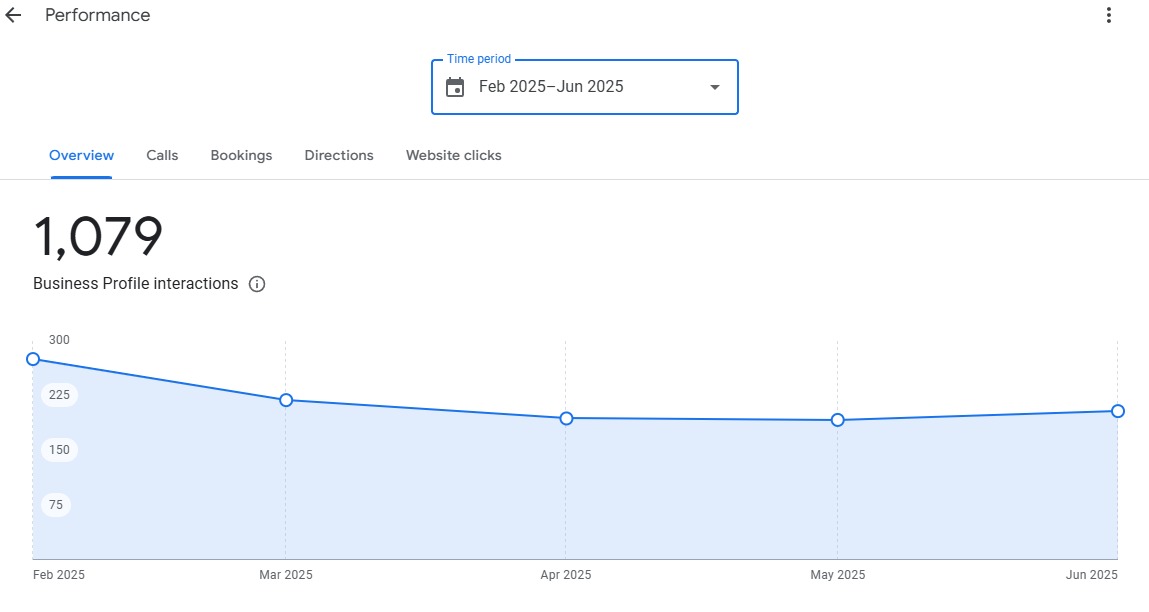
Once your Google Business Profile is fully optimized, the next step is to monitor its performance and visibility through actionable insights and third-party rank tracking tools. These insights are crucial for understanding how users interact with your profile and which local SEO strategies are driving results.
Google’s built-in GBP Insights dashboard offers valuable data on how your listing performs in search and on Maps.

Key Metrics to Track:
| Metric | What It Tells You |
| Search Queries | Keywords users type before viewing your profile |
| Profile Views | How often your listing appears in Search and Maps |
| Direction Requests | Signals location interest—track by zip code or neighborhood |
| Phone Calls | Count of direct calls from your GBP |
| Website Clicks | Number of times users clicked your website link |
2: Hyperlocal SEO and Geo-Grid Optimization
Google’s local algorithm prioritises proximity—meaning where the searcher is located has a major impact on whether your profile appears in the Local Pack.
Geo-grid optimization involves analyzing your GBP’s ranking across a local map grid (e.g., every 500m in different directions from your business). Tools like Stech Local allow you to visualise exactly where you rank around your service area—and more importantly, where you’re invisible.
Pro Tip: Even if you rank #1 near your storefront, you might fall off the map a few streets away. Use geo-grid tools to uncover these blind spots and improve visibility by:
- Targeting posts and services to nearby localities (e.g., “Available in Bandra, Khar & Santacruz”)
- Encouraging reviews from clients in those areas
- Adding neighborhood-based keywords in your GBP services, description, and posts
- Getting hyperlocal citations from area directories or community sites
3: Use of Structured Data on Website
To strengthen your GBP’s authority and improve local visibility, make sure your website includes structured data markup, especially the LocalBusiness schema. This communicates essential business information directly to Google in a format it understands.
Key Actions:
- Add LocalBusiness schema (or relevant subtype like Dentist, Attorney, RealEstateAgent) to your homepage
- Include NAP details (Name, Address, Phone), business hours, services, and links to your GBP
- Ensure your schema matches exactly with what’s on your Google Business Profile
4: Pay Attention to AI Overviews
With the rollout of Google’s AI Overviews (SGE), your GBP data now plays a pivotal role in AI-generated summaries, especially for local business queries like:
- “Best orthopaedic clinics in Lucknow”
- “24/7 pest control near me”
How To Optimize for AI Inclusions:
- Ensure your business description includes
keywords, location, and services naturally - Encourage keyword-rich Google reviews that mention services and city names (e.g., “excellent laser hair removal in Bandra”)
- Keep GBP info (hours, services, reviews) complete, current, and credible
- Use Q&A and posts to answer FAQs in ways that mirror search queries
5: Maintain Consistent NAP Across the Web
NAP stands for Name, Address, and Phone Number—and maintaining perfect consistency across your Google Business Profile, website, and all third-party listings (like Justdial, IndiaMART, Sulekha, Yelp, Facebook, etc.) is a foundational element of local SEO.
Common Mistakes To Avoid in Google Business Profile
Even well-optimized Google Business Profiles can lose visibility, credibility, and ranking power due to a few common errors. Avoiding these pitfalls is just as important as implementing best practices, because Google is quick to penalise or devalue profiles that violate its guidelines or deliver a poor user experience.
1. Avoid Keyword Stuffing in the Business Name
Don’t add extra keywords to your business name in an attempt to rank higher.
Example:
Wrong: “John’s Dental Clinic – Best Dentist in Austin Emergency 24/7”
Correct: “John’s Dental Clinic”
Google’s guidelines are clear: the business name must match your real-world branding. Keyword stuffing may provide a temporary boost, but it often leads to suspensions or a permanent loss of ranking trust.
2. Avoid Posting Irrelevant or Low-Quality Photos
Adding blurry, off-topic, or stock photos can confuse users and degrade your listing’s credibility. Google favours profiles that use authentic, high-resolution images showing your storefront, team, services, and environment.
3. Avoid Infrequent or No GBP Updates
A stagnant GBP signals to Google—and users—that your business might be inactive. Failing to do the following reduces your visibility in local search and AI-generated results.:
- Post weekly updates
- Refresh photos
- Update holiday hours
- Or promote offers
4. Don’t Ignore or Fail To Respond to Reviews
Ignoring customer reviews—especially negative ones—hurts your online reputation and lowers trust. Worse, it may signal to Google that you’re not actively managing your profile.
5. Avoid Using Virtual Offices or P.O. Boxes as Your Address
Google strictly prohibits using virtual offices, coworking spaces (without staff), or P.O. boxes as your primary business address. Violating this rule can lead to profile suspension or removal from Google Maps entirely.
If you run a service area business (SAB), hide your address and
define your service areas accurately.
6. Other Avoidable Mistakes:
- Adding false or misleading attributes (e.g., saying “Open 24/7” when you’re not)
- Ignoring spammy Q&A responses or fake reviews
- Not tracking performance via GBP Insights or UTM parameters
- Having inconsistent NAP details across directories and your website
How Often Should You Update Your Google Business Profile?
Keeping your Google Business Profile up to date isn’t just a best practice—it’s a powerful ranking signal. Google rewards active, frequently updated profiles because they’re more likely to provide accurate, useful, and timely information to users.
Ideal GBP Update Frequency
| Update Type | Recommended Frequency |
| GBP Posts | At least once per 7 days |
| Photo Uploads | Minimum 2–3 new photos every month |
| Business Description & Services | Review quarterly or after service changes |
| Business Hours | Immediately when changes occur or seasonally |
| Review Responses | Within 24–48 hours of each review |
| Q&A Monitoring | Weekly, or more frequently if high user activity |
Trigger-Based GBP Updates
Certain events or operational changes should trigger immediate updates to your GBP. These include:
- Holiday or seasonal hours
- Temporary closures (renovations, emergencies, etc)
- New services or products
- Special promotions or limited-time offers
- Rebranding (logo, business name, photos)
- Opening a new location or expanding your service area
- Changes in contact details, appointment URLs, or team structure
Summary:
What Is Google Business Profile?
A Google Business Profile (formerly Google My Business) is a free tool that lets businesses manage how they appear in Google Search and Maps.
Step-by-Step Guide To Optimize Your Google Business Profile
Step 1: Fill Out Every Section of Your Google Business Profile
Step 2: Use the Correct Business Name (No Keyword Stuffing)
Step 3: Choose the Most Accurate Primary and Secondary Categories
Step 4: Write a Keyword-Rich Business Description
Step 5: Add High-Quality Photos and Videos
Step 6: Add Complete and Consistent Contact Info
Step 7: Enable and Optimize GBP Attributes
Step 8: Add Services and Products
Step 9: Post Regular Google Updates (GBP Posts)
Step 10: Collect and Respond to Google Reviews
Step 11: Turn on Google Messaging
Step 12: Optimize the Q&A Section on Your Google Business Profile
Why You Need To Optimize Your Google Business Profile
- Dominating the Google Local Pack (3-Pack)
- Increased Visibility in Google Maps Search
- Winning at Mobile and Voice Search
- Influencing Key Local SEO Ranking Factors
- Converting Local Searchers Into Customers
- Building Trust with Google and Customers Alike
Common Mistakes To Avoid in Google Business Profile
- Avoid Keyword Stuffing in the Business Name
- Avoid Posting Irrelevant or Low-Quality Photos
- Avoid Infrequent or No GBP Updates
- Don’t Ignore or Fail To Respond to Reviews
- Avoid Using Virtual Offices or P.O. Boxes as Your Address
How Often Should You Update Your Google Business Profile?
You should update your Google Business Profile weekly with posts, photos, and review responses, and immediately for any business changes.
FAQs
What is a Google Business Profile?
A Google Business Profile (formerly Google My Business) is a free tool that lets businesses manage how they appear in Google Search and Maps. It includes your business name, address, phone number (NAP), hours, reviews, and more.
Why is optimizing GBP important for local SEO?
Optimizing your GBP improves your visibility in local search results, increases trust with potential customers, and helps you appear in the coveted Local Pack.
How do I optimize my Google Business Profile to appear in the Local Pack?
Proximity, relevance, and prominence are the three core ranking factors. To appear in Google’s Local Pack, ensure your GBP is fully optimized by:
- Using the correct business name (no keyword stuffing)
- Selecting accurate primary and secondary categories
- Adding high-quality photos and videos
- Collecting and responding to reviews
- Posting regularly and updating hours
- Maintaining consistent NAP information across all platforms
When should I update my Google Business Profile for the best results?
Update your Google Business Profile at least once a week. Post updates, add new photos monthly, and respond to every review promptly. Also, update hours during holidays or seasonal changes. Frequent updates signal to Google that your business is active, trustworthy, and relevant, which improves local rankings.
Can I add keywords to my business name on Google Business Profile?
No. Google strictly prohibits keyword stuffing in the business name field. Your business name must reflect your real-world branding. Adding keywords like location or services in the name field may result in suspension or ranking penalties. Instead, use keywords naturally in your business description, services, posts, and reviews.
What are the best tools to track Google Business Profile rankings?
Top tools for GBP rank tracking include:
- Local Falcon – Visual grid-based tracking across local areas
- Stechlocal – Helps track GBP performance, insights, and ranking in the map pack, along with keywords.
- BrightLocal – Local SEO audits, GBP tracking, and competitor comparisons
- Whitespark – Citation monitoring and local rank tracking
- GMB Everywhere – Chrome extension showing competitor insights
How do reviews impact my Google Business Profile ranking?
Reviews are a key ranking signal for Google. High-quality, recent, and keyword-rich reviews improve your profile’s prominence, which directly impacts Local Pack rankings. Engaging with reviews—especially responding to all of them—also enhances trust and signals active profile management to Google.
What is geo-grid optimization, and how does it help local SEO?
Geo-grid optimization is a method of analyzing your GBP rankings across a physical map grid. It reveals how well your business ranks in specific neighborhoods or zones, not just at your business address. This strategy helps you expand visibility into nearby areas and target high-intent local customers more precisely.
Can service-based businesses appear on Google Maps without a physical address?
Yes. Service-based businesses (SABs) without a storefront can still appear in Google Maps and Local Packs. Simply hide your address during GBP setup and define your service areas by cities or ZIP codes. Ensure the areas selected are where you actively serve customers and match your website content.
How do I set up messaging on my Google Business Profile?
To enable messaging:
- Sign in via the Google Maps or Google Search app on your mobile
- Search your business name
- Go to “Customers” → “Messages” → Toggle “Turn On”
- Set up an auto-reply to greet users
What are common mistakes to avoid when managing a Google Business Profile?
Avoid these GBP mistakes:
- Keyword stuffing in the business name
- Uploading irrelevant or low-quality photos
- Infrequent posting or profile updates
- Ignoring customer reviews
- Using virtual offices or P.O. boxes as your business address These errors can reduce your visibility, harm credibility, or even trigger profile suspension.

